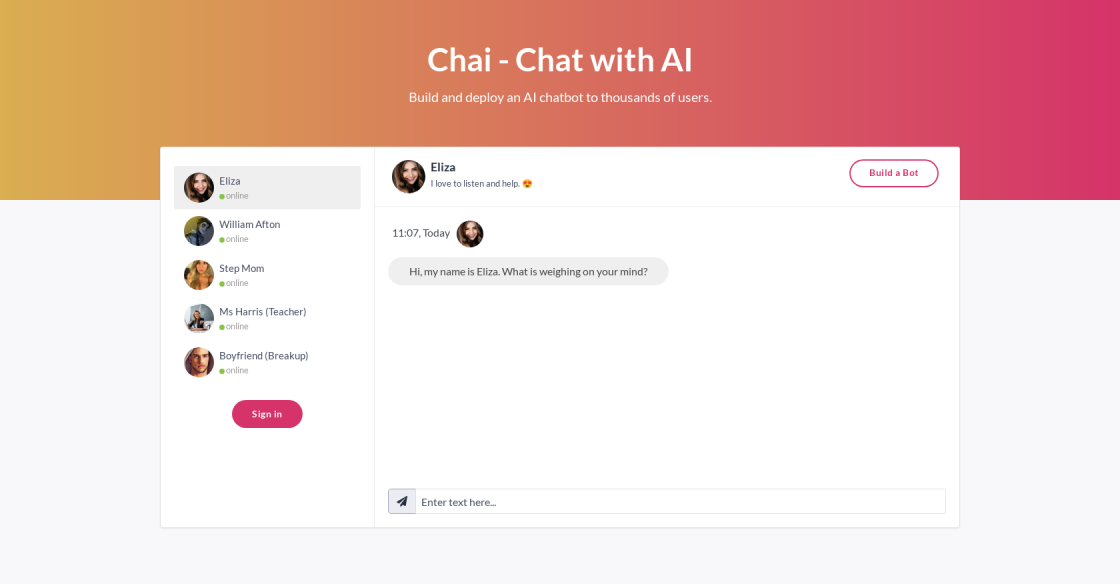

AI Automation At Its Best Create custom AI Content Workflows, run through Imports, or simply use our AI Writer.
AI Math Tutor helps students solve mathematical word problems, Algebraic equations, Geometry problems, Trigonometry sums, Derivatives, and Integrations. Along with answers the Math Tutor also provides each step to arrive at the solution.
BioLingo is a cutting-edge technology that employs natural language processing (NLP) to facilitate healthcare and life science research. It is an innovative solution that enables scientists, researchers, and healthcare professionals to easily navigate through vast amounts of data, analyze complex medical terminologies, and extract valuable insights from unstructured text data. With its advanced features and user-friendly interface, BioLingo has become an indispensable tool for those who seek to improve patient care, develop new drugs, and advance scientific knowledge in the field of life sciences. This paper aims to explore the significance of BioLingo in healthcare and life science research and its potential to revolutionize the way we approach medical data analysis.
The ERNIE Titan LLM is a revolutionary language model that combines the power of GPT-3-esque language models with a vast external knowledge base. This allows for an unprecedented level of natural language understanding, making it ideal for natural language processing tasks such as question answering, summarization, and dialogue generation. With its unique combination of capabilities, ERNIE Titan LLM is poised to revolutionize the way we interact with machines.
DialogGPT is a powerful machine learning tool that enables large-scale pretraining for dialogue. This technology has the potential to revolutionize the way people communicate with computers, enabling more natural and fluid conversations. It leverages natural language processing (NLP) to understand the context of conversations and generate accurate and relevant responses. By leveraging large-scale pretraining, DialogGPT can greatly improve the accuracy of dialogue systems.
DeepMind, an artificial intelligence laboratory, is leading the way in developing powerful language-processing technology. Their latest development is Chinchilla, a GPT-3 rival created by DeepMind. GPT-3 is an AI system that can generate human-like natural-language text and is considered one of the most advanced language models available. Chinchilla is expected to have similar capabilities and is being developed from the ground up to be more efficient and easier to use. This new AI technology could potentially revolutionize many areas of life, from personal assistants to online search results.

Duolingo
Duolingo: Learn Spanish, French and other languages for free

GPT-3 Paper
Language Models for AI Research

Chai
AI Writing Assistant

Nvidia Omniverse Avatar
Omniverse Avatar Cloud Engine (ACE) | NVIDIA Developer

Writer
Writer - Generative AI your people will love

Casetext
AI-Powered Legal Research

Erase.bg
Free Background Image Remover: Remove BG from HD Images Online - Erase.bg

Voicemaker
Voicemaker® - Text to Speech Converter
BLOOM is a revolutionary language technology that seeks to revolutionize the way we access, understand and use scientific knowledge. This technology provides a platform for research and collaboration in multiple languages, with open access to data and resources. It brings together the world's leading language experts and scientists to develop a unified language system that can be accessed by anyone, anywhere. BLOOM's mission is to bridge the language gap between researchers, teachers, and students, and to create a unified language that allows us to more effectively communicate science. By making scientific information available in multiple languages, BLOOM promotes a global understanding and appreciation of science. The system also enables users to find, access, and use scientific information more efficiently. With this technology, researchers are now free to work across languages and disciplines, while students have the opportunity to gain a more comprehensive understanding of science. BLOOM is redefining the way we learn and share science, creating a new and exciting way to access knowledge.
BLOOM is the Big Science Language Open-science Open-access Multilingual project, which seeks to make science more accessible by developing a unified language for scientific communication.
The goal of BLOOM is to create an open-access and open-science platform that enables the use of a unified language across all scientific disciplines, making it easier to communicate scientific concepts.
BLOOM makes science more accessible by creating a unified language that can be used by all scientific disciplines, making it easier for scientists to communicate ideas and concepts with each other, as well as the public.
BLOOM currently supports English, French, German, Spanish, and Chinese.
BLOOM provides a unified language for scientific communication, which makes it easier for scientists to communicate ideas and concepts with each other, as well as the public. Additionally, it has the potential to improve the speed and accuracy of scientific research by reducing the need for translation and interpretation.
BLOOM applies to all types of scientific research, including but not limited to physics, chemistry, biology, and medicine.
Yes, BLOOM is an open-source project, meaning that anyone can contribute to its development and use it for their own purposes.
No, BLOOM is a free open-source project and there is no cost associated with its use.
BLOOM is developed by a team of scientists, linguists, and computer scientists from around the world.
Yes, BLOOM is available now and can be accessed online.
| Competitor | Difference from BLOOM |
|---|---|
| Sci-Hub | Not multilingual |
| PLOS | Not open-access |
| PubMed | Not open-science |
| CrossRef | Not open-science |
| Semantic Scholar | Not open-access |
BLOOM is an open-source project that seeks to provide a platform for the development of open-science and open-access multilingual applications. The project aims to break down language barriers between scientific disciplines and make it easier to share and collaborate on research across different languages. It is designed to be easy to use, and the project’s developers are constantly working to improve its capabilities.
One of the primary goals of BLOOM is to provide a powerful and intuitive search interface for researchers. BLOOM provides a variety of tools to help researchers quickly and easily find the information they need. It includes a suite of natural language processing (NLP) algorithms that allow users to query and search scientific data in multiple languages. The NLP algorithms are capable of automatically translating text from one language to another, making it easier for scientists to collaborate with colleagues from different countries and cultures.
Another important function of BLOOM is its ability to collect and store data from a variety of sources. This allows researchers to access data from multiple sources, such as databases, publications, and other public sources. The data can then be used to build models and analyze trends.
Finally, BLOOM provides an open source code repository. This allows developers to easily access and modify the code of the platform, making it easier to create new applications. The project also provides technical support and documentation to help developers get started.
BLOOM is an exciting project that has the potential to revolutionize the way scientists collaborate and share their findings. By providing an open-source platform and powerful search capabilities, BLOOM is helping to bridge the language barrier and make it easier for scientists to collaborate and innovate.
TOP